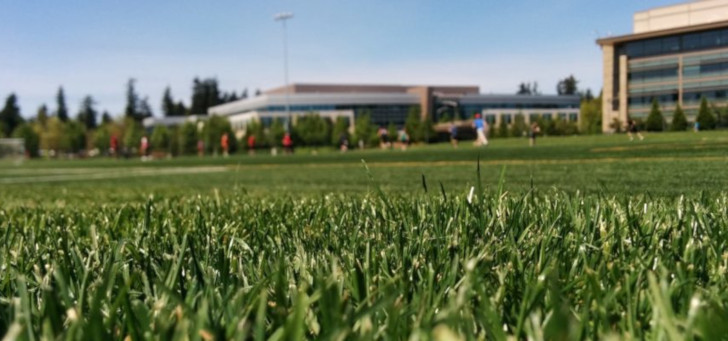Sport field maintenance: all-natural vs. synthetic grass
Today, 98% of France’s local government authorities are directly responsible for maintaining their region’s publicly-owned sports facilities, including outdoor pitches and playing fields. As a result, many are wondering whether city councils should be opting for all-natural or synthetic grass.

Today, 98% of France’s local government authorities are directly responsible for maintaining their region’s publicly-owned sports facilities, including outdoor pitches and playing fields. As a result, many are wondering whether city councils should be opting for all-natural or synthetic grass. With the help of Eurofield’s Director General, Gilles Thillaye, we take a closer look at the pros and cons of both artificial turf and real grass, from upkeep and cost to environmental impact, ahead of Paysalia’s 2017 annual conference.

All-grass vs. artificial turf: key differences
Choosing the right terrain for your sport(s)
When it comes to making the choice between artificial and traditional grass, it’s important to take into account the sport(s) the pitch will be used for. Artificial turf is usually used for soccer, and can occasionally be found on rugby pitches. Hockey, baseball and American football are also usually played on synthetic pitches. Of France’s 42,000 publicly-owned sports pitches and sports fields, just 2,300 are made of artificial turf. When synthetic turf is used, it is generally installed as a complement to existing all-natural sports pitches, which can be used up to a maximum of twelve hours per week before damage starts to occur to the grass. As a result, French government authorities tend to opt for synthetic pitches as a ‘backup’ in areas with heavily frequented sports facilities.
How does this affect sports performance?
Early artificial turf tended to be harder and less absorbent than traditional grass surfaces, which greatly affected user experience. Today, however, the quality of synthetic turf produced by leading manufacturers is far closer to that of all-natural terrains in terms of resilience, shock absorption, energy displacement, and ball rebound.
A brief history of artificial sports terrain
When examining the history of sports field maintenance in France, expert Gilles Thillaye has identified 1998 - the year France hosted (and won) the World Cup - as a key turning point in the development and use of synthetic terrains. Following the tournament, sporting club membership skyrocketed by 40%. To respond to this increased demand, France’s public sports facilities had to find an alternative to traditional grass pitches. Artificial terrain allowed sports clubs to cope with the influx of new members, while grass pitches require full-time upkeep all year round.
The environmental impact of artificial vs. natural terrain
Until the early 2000s, the recycling of artificial sports terrain was usually left in France to local government, with few rules or regulations stipulating how synthetic pitches were to be disposed of. This is no longer the case today, thanks to a combination of increased public awareness and improved traceability of recycled materials. As part of a top-down approach, French local government has put in place a series of strategies to coordinate removal, categorization and recycling of damaged or out-of-date synthetic terrain. However, numbers are difficult to obtain, while the recycling itself is far less efficient than in other sectors, such as tyre recycling. Most synthetic pitches are burned and used to provide energy, most commonly in the cement production industry. Natural terrain also affects the environment.
If we consider the cumulative impact of industrial cleaning products and machines used for upkeep and maintenance, grass pitches are no better for the environment than artificial turf. To combat this, public authorities have taken steps to limit the use of fertilizers and pesticides, as well as installing more resistant foundations to encourage growth.
Ways to reduce the impact of golf courses on the environment
The costs of sport field maintenance
Installation costs
- Natural grass pitches
An all-natural grass pitch costs around $350,000 and can last for up to 50 years. However, it can only be used for a maximum of twelve hours per week. Natural terrain is also impractical when it rains or snows. This tends restrict usage to summertime, when conditions are optimal.
- Artificial grass pitches
A synthetic grass pitch costs around $700,000, and lasts for around fifteen years. They’re able to be used on a regular basis year-round without incurring damage. Once the first pitch is in place, the installation of subsequent pitches falls by up to half.
Maintenance costs
While a traditional grass pitch requires year-round upkeep, necessitating a full-time employee, synthetic sports fields require around a month’s cumulative upkeep per year. This involves brushing the surface of the terrain once a week for around an hour and a half, as well as cleaning and loosening once per year. Including two days’ closure for maintenance, as well as the services of a specialist cleaning company, the total cost of maintaining an artificial sports terrain falls to around $3,000 per year.
How to ensure successful sports field design and maintenance: our ultimate guide!
Thanks to a combination of technological developments and industry innovation, it’s now possible for sports clubs and public sports facilities to install premium-quality, durable artificial terrain. However, Gilles Thillaye notes: “It’s still unlikely that synthetic surfaces, however high-quality, will ever replace traditional grass pitches in large-surface areas, such as stadiums and sports arenas.” Over time, these two types of terrain have each found a place in public sporting life. If you’re looking to learn more about sport field maintenance, Paysalia’s 2017 Conference includes a day dedicated to Wellgreen’s expertise in sports terrain and equipment.
Our thanks to Gilles Thillaye for his research and expertise.
© Photo credit : Pexels / Roman Pohorecki

